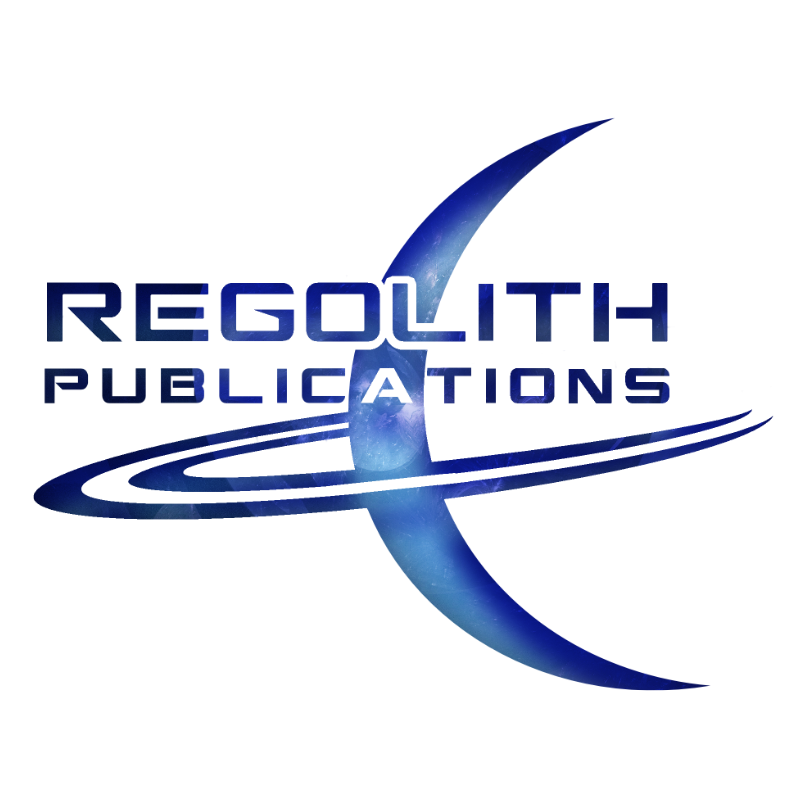Part 1: A BRIEF HISTORY OF JAPANESE SHUNGA AND EROTIC WOODBLOCK PRINT ART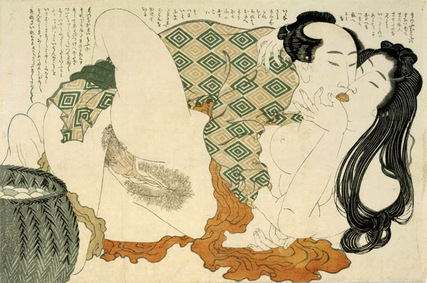 Katsushika Hokusai, The Adonis Plant (Fukujusō) Woodblock print, from a set of 12, ōban ca. 1815 Katsushika Hokusai, The Adonis Plant (Fukujusō) Woodblock print, from a set of 12, ōban ca. 1815 One of the most iconic images in Japanese art is "The Great Wave of Kanagawa" (1831) by the Japanese print artist Hokusai. The wave image, which has been plastered on t-shirts, mugs, post cards and anything else you can imagine, is part of a long tradition of Japanese woodblock print art called Ukiyo-e. Ukiyo literally translates to "floating world" -- a term that loosely invokes the idea of hedonism -- reflected by a time of long lasting peace (from the late 17th to early 19th centuries) in Japan when there was relatively little war and art and culture flourished. Ukiyo-e translates to "images of the floating world." Such wooblock print art spawned imitation art in the Japonism movement of the 1860s and 70s that went on to influence the great impressionist painters of France. This style of Japanese art would also go on to be a source of inspiration for Art Nouveau and Cubism movements as well. During this more peaceful time in Japan, when Edo (present day Tokyo) thrived and gave rise to a new merchant class of Japanese citizenry with money to spend and time for leisure activities such as kabuki, geisha, and enjoying art, many wonderful color prints were made that reflected the interests and habits of Japanese life. Among them was a sub-genre of Ukiyo-e called Shunga. Shunga basically translates to "erotica" and it doesn't leave much up to the imagination. After all, shunga is basically seventeenth century styled pornography which reflected the peaceful days of Japanese hedonistic life, where sex, food and art could thrive and be enjoyed. Interestingly enough, both Japanese men and women purchased and enjoyed shunga, erotic art, which we know for a fact since we have bookstore records that have survived dating back to the seventeenth and eighteenth centuries of Japan. The slips where discovered to have numerous women's names listed on the order showing that even women purchased and collected shunga (a few of these slips have been preserved and were on display at the Helsinki City Art Museum in Finland -- of which you can see scanned versions of the order forms in the art book Forbidden Images -- Erotic art from Japan's Edo Period, ISBN 951-8965-53-6; if you're interested enough to track it down). Another interesting fact is that shunga was viewed by Japanese people to be good luck. Samurai used to carry around rolled up or folded shunga on scrolls on their person, as it was thought to be good luck to carry it into battle. And merchants and traders carried shunga around too, in a tradition involving a similar superstition that held shunga would bring protection against, oddly enough, fires and your house burning down. Next month, in August (2015), the Fukuoka Art museum in Japan is putting on a Ukiyo-e and shunga art display along with a series of lectures on the history of the traditional woodblock are form that I will be attending. (Click here on the English page of the Fukuoka Art Museum to learn more about the exhibit). Luckily, I live in Japan and Fukuoka is just a 45 minute hour hop away from where I live via the Shinkansen (Japan's notorious high-speed Bullet Train). Needless to say, I'm excited to visit this art exhibit. I've enjoyed Ukiyo-e and shunga woodblock art since I first discovered it my sophomore year of college, when I began working toward my Asian Cultural Studies history degree. Part 2: THE EVOLUTION OF SHUNGA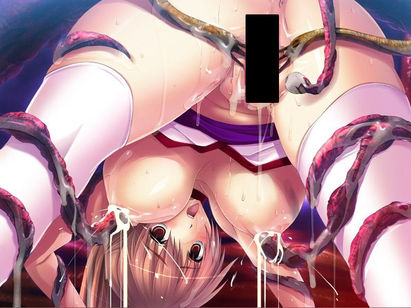 As interesting as all this is, especially for a Japanophile and a history junkie like me, there is something that not a lot of people know about the history of shunga and Japanese erotica. This art form literally spawned the modern-day tentacle porn found in Japanese pornographic animation and comics called Hentai. Hentai literally means "sexual perversion" or "sexual desire." Tentacle porn has become a sub-genre of the Japanese porn industry unto itself and hundreds of Japanese comics, videos, and video games are made each year devoted to this peculiar genre of rape-fetish, bestiality (usually a sea monster or alien type being with phallic probes or tentacles used to explore and probe a female -- and sometimes male -- anatomy), sodomy, bondage themed porn (hey, even finding a borderline NSFW picture is difficult because every image in this genre is wayyyy graphic and wayyy NSFW. The below image was censored by me just because I felt really uncomfortable with how graphic it was, and I selected this one as the lesser of all evils after browsing tentacle porn for fifteen minutes. Now my brain is ruined). Perhaps more shocking than the related image of a adolescent looking girl being molested by alien tentacles, however, is the fact that the beloved woodprint master, Hokusai, who painted the beautiful frothy ocean waves that we saw in part 1 also happens to be the founder and originator of "tentacle porn." In a shunga woodblock print called The Dream of the Fisherman's Wife, perhaps the most famous image in the Kinoe no Komatsu erotic art books published in 1814 of the Edo period, we find a young woman engaged in sexual congress with two octopuses. The image (as seen below) depicts a shell diver girl, called an ama in Japanese (hence the Japanese title Taco no Ama), who is enveloped in the arms of two octopuses. The larger octopus, called Oyakata (which means Master), performs cunnilingus on her, while the smaller octopus, the apprentice, assist by fondling her mouth and nipple. In the text above the image, the story relays, in first person, the mutual excitement by all parties of the encounter. Since the woman gives her consent, it is technically not a depiction of rape but consensual act of zoophilia / bestiality. Personally, I think it is an amazing piece of art, both in terms of its historical value and what it says about Japanese culture and society. But if you ever wondered where the strange idea of Japanese tentacle porn animation came from, well, now you know the rest of the story.
0 Comments
Summary
He's back! The Arnold Schwarzenegger as the Terminator that is. Now, I wasn't planning on going to this movie. After the dud that was Terminator: Salvation (in my opinion the weakest film of the franchise) I really had no expectations of seeing Terminator Genisys. But at the last minute, my wife and I are sitting at the dinner table and she turns to me and says, "Hey, isn't the new Terminator movie out now?" "Yes," I say. "I want to see that," she tells me. "Really?" I love sci-fi, and post-apocalyptic movies, and I was a little bit curious on why they did with the mythos of the series, so of course I said yes. So we went to the movie. Boy, was I wrong about this film! It was everything you could want in a Terminator movie and then some! Enough about me not being able to make up my mind if I wanted to see this movie or not. I'm glad I did. The plot is straight forward and flows well for juggling so much Terminator mythos. In fact, it juggles so much mythos and time line stuff that some might call it a bit convoluted. But that doesn't hurt it too much as they expertly weave together thirty years of Terminator lore into one film while resetting the franchise and (and!) put what I felt was a rather nice end-cap on the film series to date. Additionally, for as many plot changes they make, the film never seems to deviate too much from the core mythos of the franchise. It seems the movie trailer really fooled me, because it made it look like they were throwing everything out the window in order to reset the franchise. But it actually seems to be the other way around. They use the mythos to perfectly tie up the series to date and leave it open to new interpretations by setting up a new timeline. Really well done, in my opinion. Opening in 2029 of the future, John Connor is finally winning his robot war. But SkyNet turns on it's last resort -- the time displacement machine, and sends the T-800 back in time to 1984 to kill Sarah Connor. Kyle Reese is sent after it to intercept it and prevent it from killing her and thus ensure the birth of the future John Connor. Sound familiar? It should, because it's the plot of the original Terminator. But here's where things get interesting. Upon the T-800's arrival, which is an amazing CGI rendering of 1980's Arnie over the body of a modern body builder, he is intercepted by his future self, the old T-800 that was reprogrammed by John Connor to go back to protect Sarah Connor (i.e., the plot of Terminator 2). Only this time, there was a hitch. They had to send him back even earlier, to 1973 because SkyNet, being the devious Evil version of a Conscious Internet we have all grown to fear, sent back not one but three Terminators. This is the twist that changes all the time lines, because SkyNet, in a last chance effort to destroy John Connor sends a T-1000 to 1973 to kill the 9 year old Sarah Connor and a T-1000 to intercept Kyle Reese before he can intercept the original T-800. Few! That's a lot of Terminators running around. But they we've it together effortlessly story wise, which was refreshing. The timeline stuff never bogs down the flow of the narrative and the action is paced evening throughout the entire film. Because of the shift in the events of the timelines, however, Judgement Day changes from 1997 to 2017. So Kyle Reese and Sarah Connor jump into the future of the new altered timeline in 2017 to stop SkyNet once and for all. And, well, without giving away any major spoilers, that's about all I can say about this film. What I Liked: I have to say I was a little bit iffy on the casting of this film. Arnie is a given, because he IS the Terminator. But I wasn't sure that Emilia Clarke could pull off a tough Sarah Connor. Don't get me wrong, I love (LOVE) Emilia Clarke. If I could, I'd clone fifty of her and marry all fifty. That's how much I love Emilia Clarke! But she seems so soft and sweet, and even in Game of Thrones where she's killing everyone with her army and her dragons, she only ever comes off as morally conflicted. She never seems to have the weight or the intensity of past Sarah Connors including her Game of Thrones co-actress Lena Headey, who played Sarah Connor in the Terminator television series The Sarah Connor Chronicles. (Which was an excellent series by the way. It sucks that it ended where it did, because one more season would have made that show epic.) I didn't know if Clarke could play "do or die" tough. But I'm glad to say she pleasantly surprised me. She didn't have the motherly poignancy that Headey or even Linda Hamilton had, but to be fair this version of Sarah Connor isn't a mother yet. So really the only person she was fighting to save was herself. Not a bad thing, but it alters the performance of the lead star enough where it seems the film was lacking a big of that gravitas that comes with having a mother fight to protect her child. That's just my opinion though. But this really has nothing to do with Clarke's performance as a young Sarah Connor. She's spot on. Next, I was really agitated that Jai Courtney was cast as Kyle Reese. So far I've hated everything that Jai has starred in. When he's a supporting character he seems to be tolerable, but after seeing him in leading rolls I felt he was a flat actor with no range or depth. But once again, I was pleasantly surprised. His Kyle Reese is likable, funny, tough when he needs to be and caring when he needs to be. And Jai's acting was just fine. It's nice to see an actor actually improving in his trade. So although I went in rolling my eyes, I found myself eating some humble crow. Jason Clarke as the older John Connor was good too. He has a charisma to his performance that fits really well this this particular story and this particular incarnation of John Connor, but that's all I'm gonna say about that. Finally, I liked the story. A lot. I would say that this is probably my favorite of all the Terminator films, but that said, it only works because of all the previous films and the mythos its building on. Without that established frame work this story would be the lesser because of it. It would still make sense, but it would seem extremely convoluted. But my wife who hasn't seen any of the original films was able to follow the story just fine, and she's not even a nattive speaker of English. So, I can't say that it was confusing. The narrative was pretty straight forward and the time hops were explained perfectly well in the context of the film's own story that it all moved like a well oiled machine (pun intended). What I Didn't Like A couple of the actions scenes seemed a little overdone. The helicopter fight scene for example, was a mess. It wasn't even really integral to the plot since they were merely traveling from point A to point B, and nothing really needed to happen other than that. The villain didn't seem menacing enough. And no, I'm not talking about SkyNet. I am talking about the new Terminator for this film. It's called a T-3000 and it's basically a Terminator virus that infects human DNA and turns them into a living machine, similar to a T-1000, but with cooler visual effects (because it's Hollywood). Anyway, for how awesome of a machine it is, it never feels as ominous as the T-800 that's stalking them in the beginning. Even Reese's fight with the T-800 at the beginning of the film seems more of a threat than the T-3000 through the rest of the film. Even though the T-3000 is fully capable of ending Kyle Reese and Sarah Connor, he technically can't due to a time-line related plot issue that would end in a paradox. So he seemed like an impotent villain. Which was annoying. I wanted something that felt like Terminator 2 when we are faced with the seemingly unstoppable T-1000. Something where you were always on the edge of your seat because you couldn't imagine how Sarah and John (young John) would get out of it alive. I never had that feeling this time around apart from the T-800 fight at the beginning that was really intense. What Bothered Me: I didn't like John Connor or his particular story arc in this version. I get what they are doing with the mythos and the story, but without giving anything away, I can't help but feel they've made a terrible time paradox that the writers just shrug away. As a science buff who has studied astronomy and physics to a certain degree, when big obvious science no-no's like this pop up in a film, they really grate on my nerves. But again, I can't say anything without giving spoilers, so I'll just recommend this film, because I have to say there was a lot more to like than not like about it. Final Two Cents: I still stand by my initial comment that I think Terminator: Genisys is the best Terminator film to date. It's solid sci-fi, has big action sequences evenly paced throughout, and there is a lot of story being juggled here which makes it that much more surprising to you when you watch the film and see how effortlessly the filmmakers juggled everything. I would definitely recommend this film to sci-fi buffs and action movie buffs. And if you'r a fan of the first Terminator films then there is absolutely no reason not to see this one. It's worth your time. Did you know that just as many women read the zombie apocalypse genre as men? Well, they do.
Did you know that male characters dominate the zombie apocalypse genre? Well, you do if you’re a fan who reads zombie apocalypse books. I was recently prompted to write about why I like to write about strong women characters.
Briefly, before I get into the answer, allow me to summarize my main characters for those who haven’t read my books in the BITTEN series.
Of course, I have male characters as well. The books revolve around an ensemble cast. But the story, for the most part, is told through the eyes of Rachael, Alyssa, Jennifer, and Saeko. So why make the females the main leads? Why have them carry the story? Why tell it from their points of view? What as a male author compels me to write women? The first thing I should relay is that I am somewhat of a feminist. I am all for women’s rights, equality, and fair treatment. In other words, I strongly believe that women should be allowed all the same rights and opportunities as men and shouldn’t be treated lesser as people simply because of their sex. Sexism is ugly, ignorant and antithetical to creating a just and prosperous society. In every society in the world that denies or restricts a woman’s basic rights and puts her under the yoke of male dominion by elevating the men to a superior status and demoting women to an inferior one, that society has *not grown more peaceful and prosperous. Instead, such societies often resemble the barbaric, unlawful, iniquitous, and wicked worlds the post apocalypse is often set in. These are not societies I would care to raise my daughter in. They are not societies I would care to raise my son in. Because the only value they teach is how to judge women as inferior to men, and this kind of sexist thinking I detest. So what does this all have to do with women characters in zombie literature, you might wonder? Well, let me ask you something: Do you think the world of zombie fiction, whether it is film or books, has given women fair treatment? Because I sure don’t. That doesn’t mean it’s all sexist (although some of it certainly seems to be). But it means that women, at least where the post apocalypse is concerned, aren’t viewed as well suited as the men to be fighters, survivors, and ass-kickers. They are viewed as in need of saving (the stereotypical damsel in distress), or they are only along for the ride so she can become the romance interest (the stereotypical love interest there only to fulfill the desires of the man or else her one-dimensional desires to be with the man), or she’s there to live up to the standard of the male hero by becoming the equally “strong female” hero, thereby simply filling the role we traditionally assign to the stereotypical masculine hero figure. Of course, there are always exceptions to the norm, such as Robert Kirkman’s The Walking Dead which does a pretty good job at having realistic, three dimensional women characters. Especially the television series – of which Carol is my favorite. No surprises there. They do seem to have a problem with black male leads though. As the High Lander would say… there can only be one. At least, one at a time. It’s so bad, in fact, that you’d swear it has to be an ongoing in-joke between the writers and the producers. But I digress. And it’s not just the fact that many films, television, and novels in pop culture cannot seem to pass the Bechdel Test. It’s that they (surprisingly enough) so frequently fail to pass such a simple test articulates, I think, a problem with how women are viewed and portrayed in popular culture: namely that it’s not a problem with the number of women we see on screen, or the number of female characters we have in a book, or how strong she is or whether she can match the men step for step, but the problem resides in the depth of their stories and the range of their concerns as women. It is here where I feel the zombie genre and the more encompassing post-apocalyptic genre has not done women justice. Sure, there are plenty of strong female lead characters, but this is not without its share of problems too. Hear me out, because I love strong female characters. In fact, you might say I practically worship them. Have you seen my Wonder Woman shrine? Sorry, I’m getting off track. Strong female leads are great. There’s nothing wrong with more of that. But I have to say, have you ever noticed at how many strong women characters just seem to act exactly like guys, but are thinner and have big breasts? Think of Ellen Ripley in the movie Alien. She’s great. But the only other female character dies early on in the film, and then it is just Ripley and the men. Now many zombie novels do you know that are like this? I know a lot. Like virtually all of them. In my mind, if you simply give a female character all the features and roles traditionally assigned to the males, making her tough talking and kick ass, but have no other female characteristics – then I'm afraid you’ve merely written a woman into a male stereotype. She may still be a “strong woman” as a character, but she’s not much of a character because there’s nothing that specifically makes her a woman other than her anatomy. I mean, can’t we do better than that? I’d sure like to think so. Don’t get me wrong. This doesn’t make such characters any less likable. I love Ripley and the Alien movies. There will always be a need for the epitome of “strong female” characters and “strong women” in stories, both on paper and up on the silver screen. Ripley is an important role model for strong women. I'm not denying this, but at the same time I think that we as a society have matured enough to stop making strong women characters into carbon copies of their male counterparts simply to make a political statement about how women can do everything men can do. I mean, sure they can. So let’s accept that fact and start writing women with more depth as characters, with more dimensions to their personalities, with more range for their goals and desires. Let’s not make cardboard cutouts of the males and simply give them tits – because that would be sexist. Rhiannon Frater, author of The World Dies trilogy (one of the few zombie stories with genuinely well written female characters) echoes my sentiment when in a blog called "In Defense of the Phrase 'Strong Female Character'” Frater writes:
She goes on to add that it is because of the strong women in her life that she chooses to write strong women characters (to read her full essay click here). It's a sentiment I can relate to. You see, my brother and I were raised by a single mom. It takes a certain kind of strength, dedication, and love to be a single mother, and I’ve never read a book where the single mother seemed like the one I knew growing up. And I certainly have never read a book where a single mother kicked zombie butt in the post-apocalypse as she desperately searched for her lost son. From a storytelling standpoint, I thought this would be a nice fresh angle to enter the universe from. I hadn’t seen anyone else do it before, and I felt that it would give my book something new – something extra to set it apart from all the rest. Naturally, strong women are more than just women who can kick ass like the guys. They are more complex than Ellen Ripley, they are three dimensional and I feel it's beyond time for women characters who represent something more than just being strong like one of the guys, because not every female character has to aspire to be Ellen Ripley. In my books I wanted not only “strong women” but also realistic women. And for women to be as realistic as women in the real world, I have it on good authority that… at least on occasion… they come into contact with other women. The fantasy author Kate Elliot has an excellent piece online over at Tor.com that explains how to write women characters so they are realistic and not just imitations of the heroic male stereotype. It’s worth a read (click here if you’re interested). Her key point amounts to the fact that women characters need other women characters to interact with in order to be true to real life. A woman who never talks to another woman is unrealistic. It would be the same as a man never talking to another man. And unless the man is the last man on the earth then there is simply no reason for that to ever be the case. So why should this practice of women never talking to other women be the norm for women characters in so many areas and genres? In my BITTEN novels I chose to have women characters be the ones to carry the plot forward from the onset. In fact, a big reason I chose to write women as my main characters, as both the heroes and the villains, protagonist and antagonist, was that I wanted to challenge myself as a writer. You see, I wanted to read strong female characters, because I love women so much, but all I was getting was the one-dimensional Rambo with boobs type characters. Now, there’s a place for that kind of female character, but I think good stories are stories that are about the characters. And good character writing, whether it is male or female, has to go beyond just breaking the expectations of gender roles in society. So I set out to challenge myself. I decided to write realistic women characters into my story – and not only that, I decided that they’d be the focus of the narrative, they’d drive the plot, they’d be the one’s to make discoveries, have revelations, and grow as individuals. They’d have flaws. They’d become friends or else enemies to one another. They'd have their own goals and desires. And all this would happen outside of the sphere of what was going on between them and the male characters. All this is what makes realistic women characters. Otherwise, all you have is a one-dimensional character like Ellen Ripley. Again, I love Ellen Ripley, but one of the reasons I think she is a one-dimensional character is because she also happens to be a representation of the ideal woman. An ideal woman is a fantasy of what we envision the perfect woman to be. But an absolutely perfect woman cannot be at all a realistic woman, just as a perfect man, such as Superman, would not necessarily be a very realistic representation of your average man. One might say Ripley is like Mary Poppins in this regard – practically perfect in every way. She’s smart, sexy, strong and a survivor. But she has no goals other than to survive. In Aliens, the sequel to Alien, we discover that Ripley has a daughter back on Earth, but getting back to her daughter never seems to be one of her primary goals. It seems more like an afterthought the writers threw into the film to flesh out the character's back story after the fact and to remind you that, yes, Ripley is in fact a woman. Which is fine, but they never visit this aspect of Ripley again, not in Alien 3 or Alien Resurrection (granted – the 2014 video game Alien: Isolation follows the story of Ripley’s daughter Amanda who is searching for her long lost mom, and fits into the canon, but has more to say about Amanda as a character than Ripley). After having written Bitten, I really didn’t know whether or not I had succeeded in writing realistic women characters. At least, not initially. I mean, how could I? I'm just a guy. But then I received this reassuring comment about BITTEN in an Amazon.com review:
It was a comment that my editor, Monique Happy, who just happens to be a woman, strongly concurred with. That’s when I let out that pent up sigh of relief. That’s the moment when I knew I had achieved what I had set out to do. I had done the fairer sex justice. Ellen Ripley, eat your heart out. Indeed, this is one of the rare occasions where I feel it’s okay to pat myself on the back, because I had achieved something special. I had written realistic sounding, realistic feeling, women characters that caught the attention of women readers enough for them to comment on how realistic my women characters were to them – as women. And you simply don’t see enough of that in the zombie and post apocalypse genre.
 Let's just say I've been staying busy getting in the necessary hours I need to finish Bitten 3: Kingdom of the Living Dead for it's scheduled deadline in September. I think I can make it. I'm sitting at a very comfortable 50K word count and I am planing on it topping out at between 65 and 70K. A little less than Bitten: Resurrection but a little more than Bitten: Land of the Rising Dead. Of course, I had to bump the deadlines back for Bitten 4 and The Scarecrow & Lady Kingston: A Slice of Grilled Americana back a full year, as I am nowhere near far enough into those to reach my original goal of a January / February deadline. But that said, both stories are outlined and I have the first several chapters of each written. A great rolling start which will help give me the momentum I need to make it through the rest of the year. A couple of Indy books I have on the back burner are Annihilate ME, a post-apocalyptic space horror, and Daughter of Sol, an adventure packed space opera set in the vein of Star Wars or Guardians of the Galaxy which boasts an impressive ensemble cast of humans, robtos, and aliens. I have no set timeline for writing these books, but Daughter of Sol is outlined, and I have character bios written up, world descriptions, and alien race encyclopedia, and notes on potential alien languages. Annihilate ME is still an evolving concept. If you see either of these in the next two or three years Daughter of Sol will likely be the first to make it into print. For those that have asked, yes, I still intend on writing Sex Train, a lewd spoof on the movie "Snow Piercer." I have some really twisted ideas for it and am toying with making it a horror / comedy in the vein of Little Shop of Horrors and the film Tremors. It will be both scary and funny and have way too much sex to be considered anything other than the literary equivalent of an exploitation film. Finally, I would be remiss if I did not hint at a top secret project that involves comic book publishing and sci-fi. That's about all I can say right now as it is in the early stages and I am still brainstorming with my creative partner on how we're going to finance it. We are thinking of crowd sourcing it, but I will definitely keep everyone posted as things develop. That sums up everything I am working on or will be working on for the next year or so. In addition to these projects, I am toying with the idea of starting a YouTube channel in which I just blather on about my interests, including movies, books, writing, art, music, and whatever else floats my fancy. I've been wanting to do a v-Blog for several years now but have never committed. Now I think it's necessary as it would be a great outlet to promote my writing and maybe get word of mouth out about Winlock Press and other authors I support as well. Also, one last thing of note: If you haven't already, be sure to check out the zombie free book give away happening over at Winlock Press. Head on over and you can enter the drawing to potentially win your choice of 1 of 10 zombie books, including my book Bitten: Resurrection. Winlock Press is offering a promotion to win any one of ten (that's right...ten!) zombie books.
Including my ZomPoc book BITTEN: Resurrection, naturally. Winlock Press is all about shattering expectations…and that includes worlds of the undead. We love us some zombie apocalypse, and right now we have four amazing writers presenting four very different visions of the world after the dead rise. We want you to explore them all…and now’s your chance.
All you have to do is enter your name and e-mail address and you’re eligible for any of the Friday giveaways for the life (or unlife!) of the promotion. To enter the DRAWING to win free zombie books click HERE. For more about the titles you can potentially win, check out the ZomPoc page over at Winlock Press by clicking HERE. The first winner will be selected on Friday, July 3rd! So what are you waiting for? Get over there and enter your chance to WIN! Summary
George Miller's world of Mad Max returns to the silver screen bigger and better than ever. The story focuses on Imperator Furiosa (Charlize Theron) who rebels against Immortan Joe (Hugh Keays-Byrne) by stealing his five pristine "wives" who are his forced sex slaves. Immortan Joe seeks to have a boy child who is without defects so he may become the next Immortan Joe. As such, Joe uses his army of War Boys to track down Furiosa and get back what was stolen from him. Mad Max (Tom Hardy) just sort of get thrown into this conflict, and we watch the story unfold from his perspective. At the start of the film, Max is captured by the War Boys and turned into their property. He tries to escape but is captured and brought back. The next time we see him he is out on the road as the War Boys chase down the rogue Furiosa. Through fate and circumstances, Max escapes in a crash, and uses Furiosa to get away from Immortan Joe and the army that pursues them, in turn helping them do the same. In the start, nobody trust anybody else, which is only natural in the post apocalypse, especially after everyone has tried to kill each other. But as the film wore on, or drove on (I should say), the characters grew to trust one another and became like a family. It was really interesting to see. The plot of Mad Max: Fury Road is not so much simplistic as it is minimalist. But the world building is the most amazing, elaborate, richly detailed cinematic experience I've ever seen on film. It's breathtaking to say the least. What I Liked: This is the best post-apocalyptic world I've ever seen on film. The mythos is rich, not a single attention to detail was spared, and the characters all have decent character story arcs and ample backstory. Of the stand out characters you have, of course, Mad Max, who is haunted by the memories of his dead wife and daughter and his deep seeded regret at his failure to protect and save them--which in part drives his need to help Furiosa. Then there is Furiosa, who seeks redemption for working as the sinister Immortan Joe's right hand Imperator and driver of the War Machine for so long, which is why she decides to free the women -- and show them a better world -- one she hopes still exists at the borders of the desert wasteland. Finally, perhaps the most interesting character, in my opinion, is that of Nux (played by Nicholas Hoult -- known for his role as Beast in X-Men Days of Future Past). He was one of the War Boys, and drives a supercharges hot-rod in Immortan Joe's road army. He views Immortan Joe as a god, and wants to become and immortal by dying in combat and going to Valhalla, where he will be remembered as an immortal hero. Nux, of course blunders his attempt to kill Max and stop Furiosa, not once, not twice, but three times. When he realizes he failed his god, he knows that his future will not be one as a hero who joins his fallen brothers in Valhalla, but his life will end in disgrace and he will not be remembered as a hero. After he resigns himself to his failure, one of the wives tells him his destiny was never to stop them but was to help them. She helps him see that doing what is right is more important than simply trying to appease your god. So even as I watched his adrenaline and nitro filled two hour long car chase, not a single moment seemed dull. I was captivated through the whole film, and the characters were not one dimensional but had interesting back stories and good story arcs that kept me caring about them and their fates.Everything. Nearly everything in this movie pushes the minimalist plot forward. The action drives the tension, the characters simplistic goals drive the plot, and the conflict between them drives the drama. What I Didn't Like: Honestly, there wasn't anything about this film that I didn't like. It is, for all intents and purposes, a masterpiece. George Miller has crafted the prime example of a non-stop action film that uses the action to (literally) drive the plot forward. It will be studied for years to come as the right way to tell a story of this kind. At the same time, there hasn't been a world as elaborately created as this one in any film I've ever seen. It really is an amazing piece of cinematic art. What Bothered Me: As I said above, there's nothing that I didn't like about Mad Max: Fury Road. Everything from the vehicle design to the set design to the minimal use of CGI really suited the world and made this movie seem real. Like I said above, I have not been this engrossed in a film in a long, long time. It really drew me in and took me on a ride, and what a lovely day it was! Final Two Cents: See this movie! |
Tristan VickBy day I am an educator and a cultural ambassador. By night I entertain notions of being a literary master. In reality I am just a family man and ordinary guy who works hard and loves writing just about as much as I love my family. Just about. AVAILABLE NOWNEWSLETTER
|
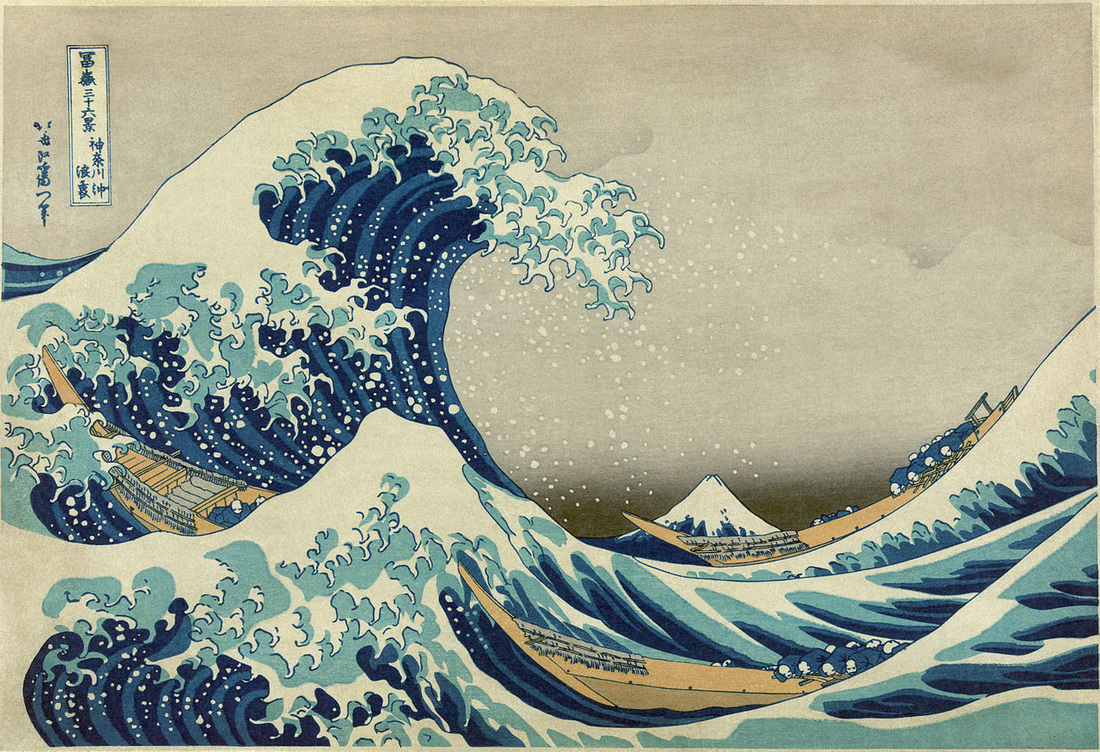

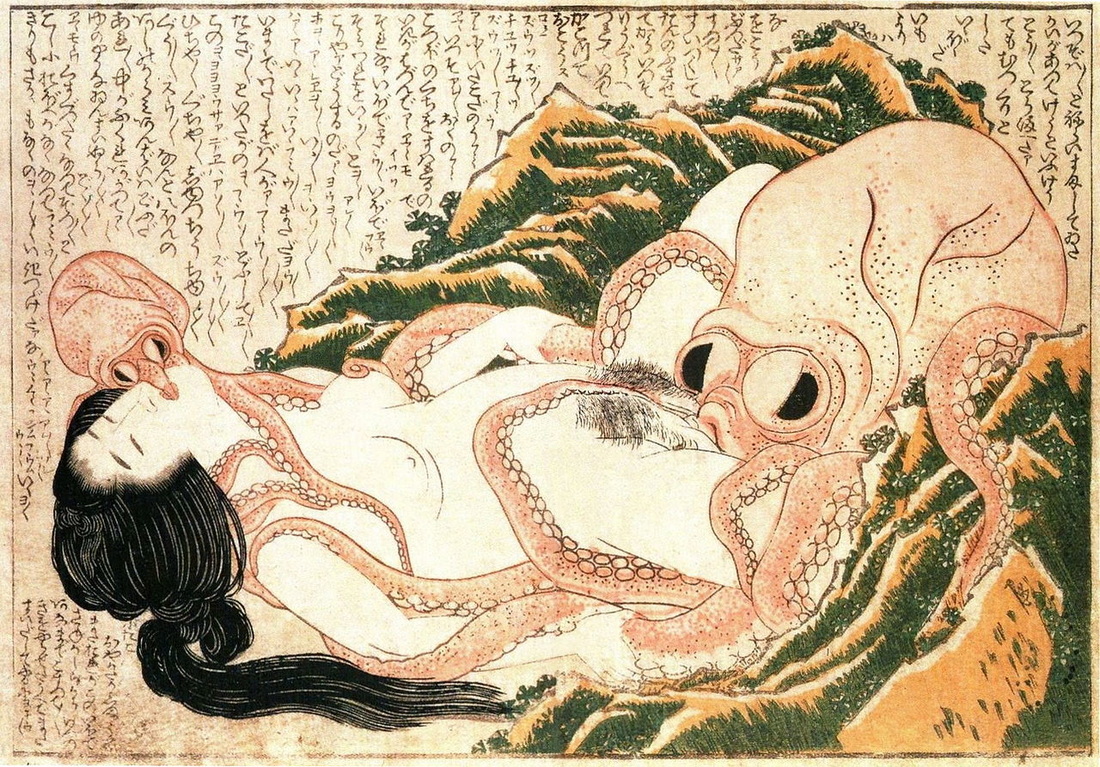

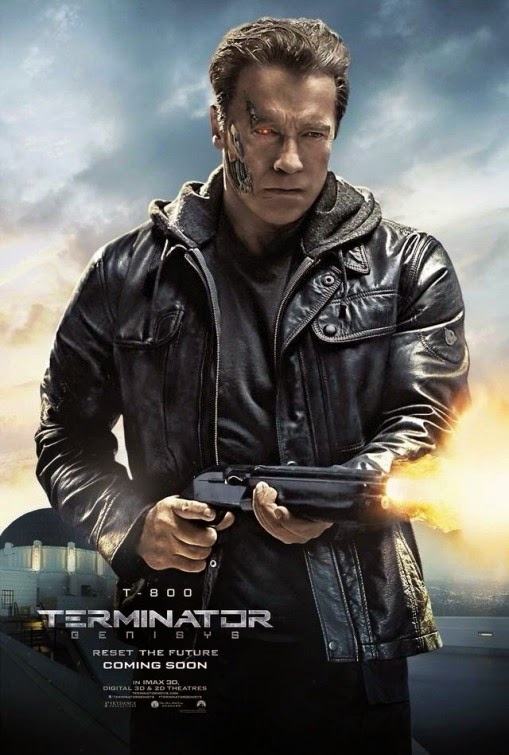
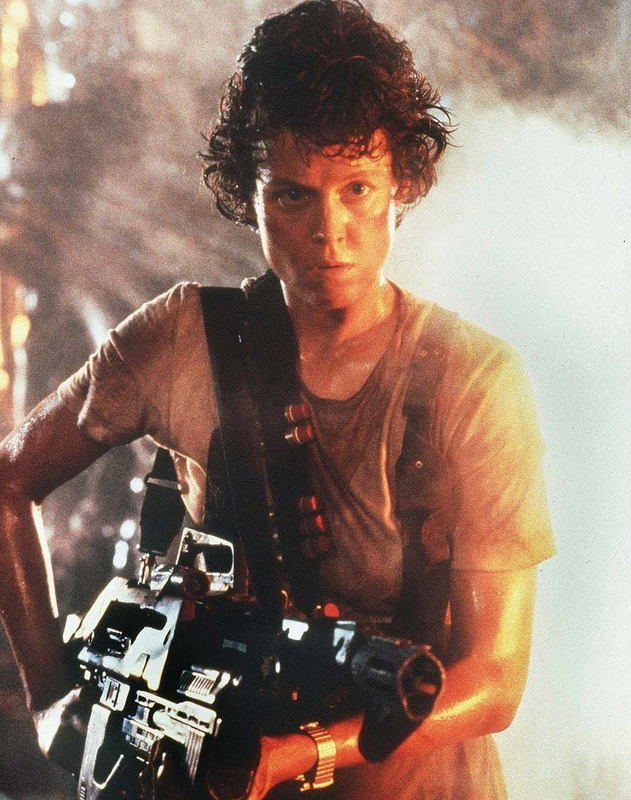


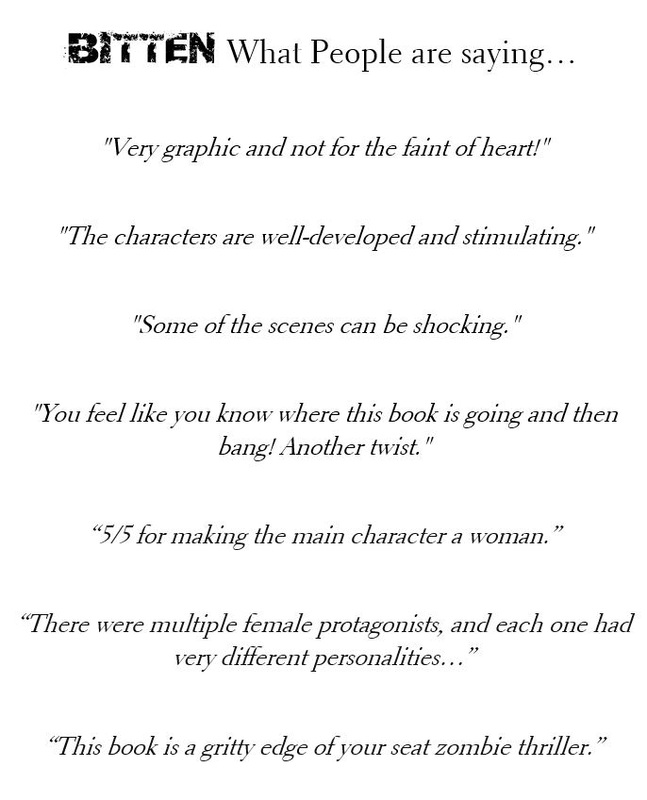




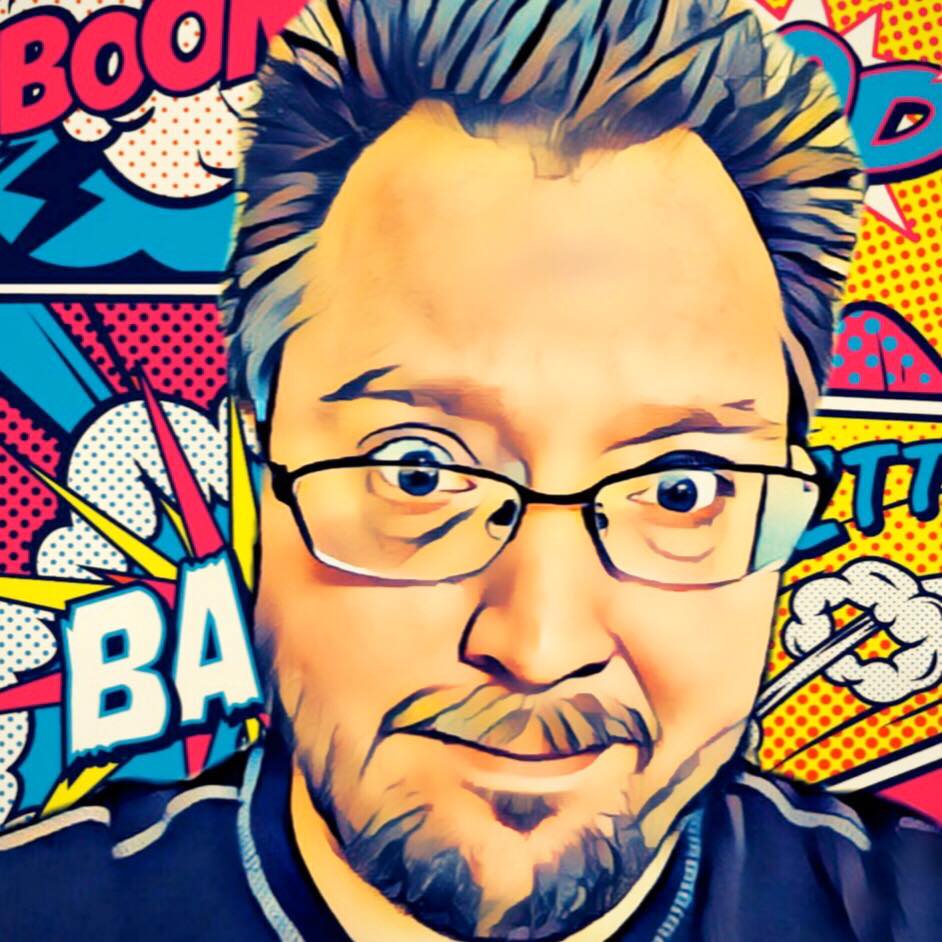

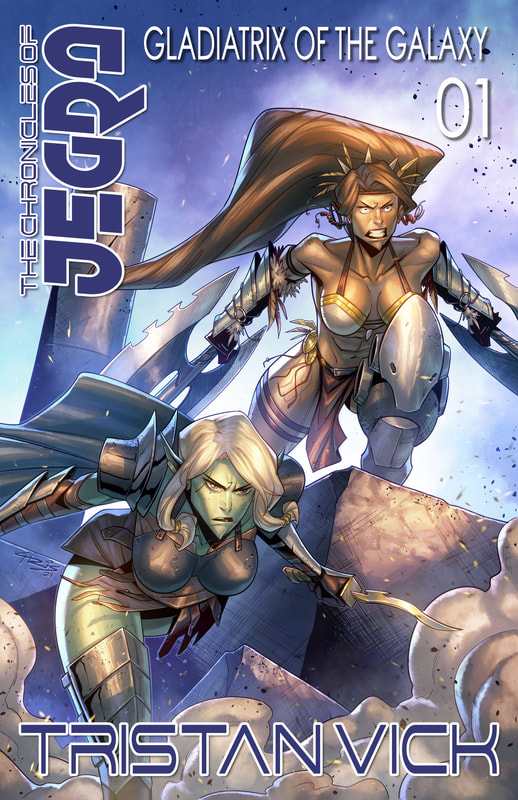
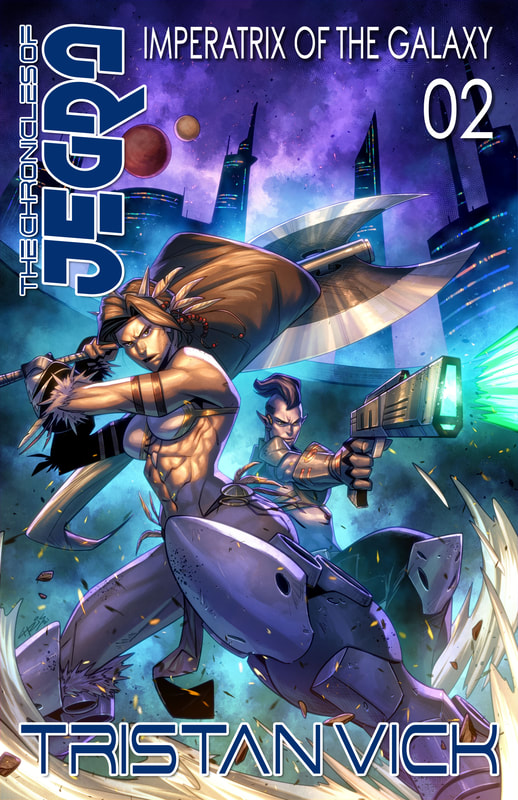

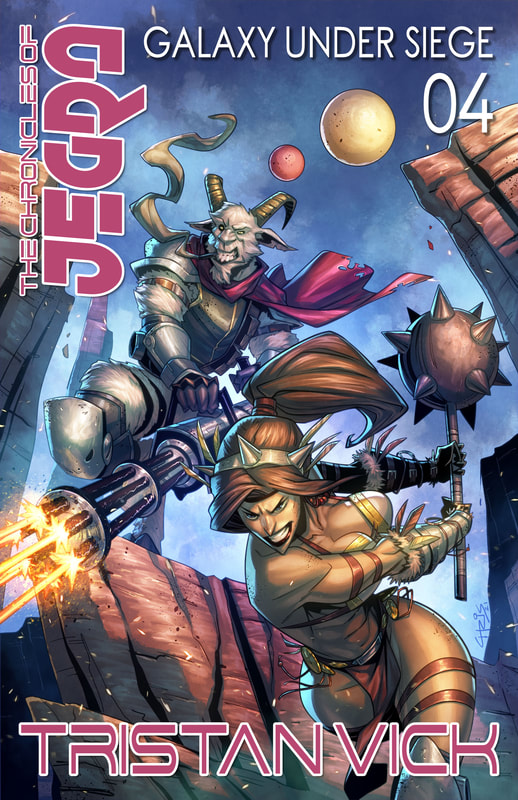

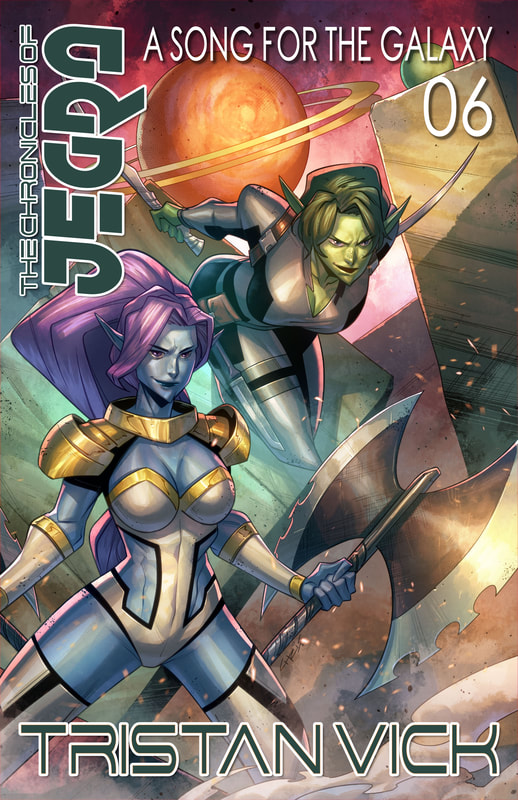
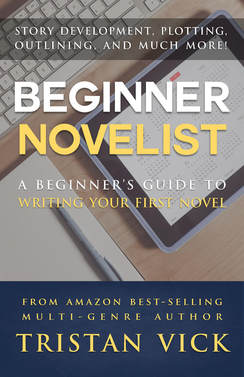
 RSS Feed
RSS Feed
